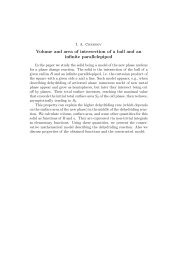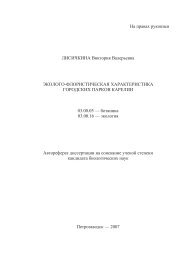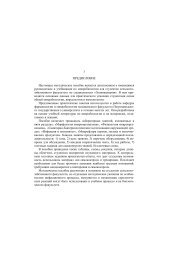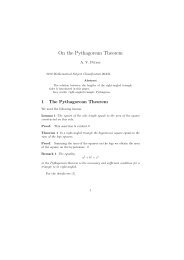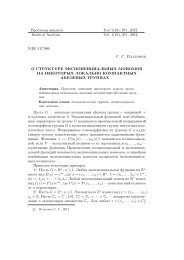Ñ 1. Introduction - Issues of Analysis
Ñ 1. Introduction - Issues of Analysis
Ñ 1. Introduction - Issues of Analysis
You also want an ePaper? Increase the reach of your titles
YUMPU automatically turns print PDFs into web optimized ePapers that Google loves.
32 A. Prusinska, A. Tret'yakovwhere‖ω(h, u 1 , u 2 , θ)‖ ≤supx∈U ε (x 0 )On account <strong>of</strong> R and ‖u i ‖, i = 1, 2, we have∥∥∥F (p+1) (x)[h + u 2 + θ(s 1 − s 2 )] p ∥∥ .‖h + u 2 + θ(s 1 − s 2 )‖ ≤ 4 · ‖h‖,and from assumption, ‖h‖ ≤ ε 2. By the above,Moreover,‖ω(h, u 1 , u 2 , θ)‖ ≤ C · ‖h‖ p ≤ 4 p · C · ε2 · ‖h‖p−1 . (10)F (p) (x 0 )[h + u 2 + θ(s 1 − s 2 )] p−1 =∑p−1Cp−1F i (p) (x 0 )[h] p−1−i [u 2 + θ(s 1 − s 2 )] i =i=0∑p−1F (p) (x 0 )[h] p−1 +i=1C i p−1F (p) (x 0 )[h] p−1−i [u 2 + θ(s 1 − s 2 )] i , (11)where‖u 2 + θ(s 1 − s 2 )‖ ≤ 3 · ‖h‖/R. (12)Taking into account the choice <strong>of</strong> R,∥ ∑p−1∥∥∥∥ C i∥p−1F (p) (x 0 )[h] p−1−i [u 2 + θ(s 1 − s 2 )] i ≤i=1∥≤ ∥F (p) ∑p−1(x 0 ) ∥ · Cp−1‖h‖ i p−1−i (3 · ‖h‖) i /R i ≤i=1∥≤ ∥F (p) (x 0 ) ∥ · ‖h‖ p−1 · 4 p−1 /R ≤ 4 p · (p − 1)! · ε2 · C · ‖h‖p−1 . (13)And nally, applying (9)(13) in (8) we obtain∥ F (s 11) − F (s 2 ) −(p − 1)! F (p) (x 0 )[h] p−1 · [s 1 − s 2 ]∥ ≤≤ 4 p · ε · C · ‖h‖ p−1 · ‖s 1 − s 2 ‖.





